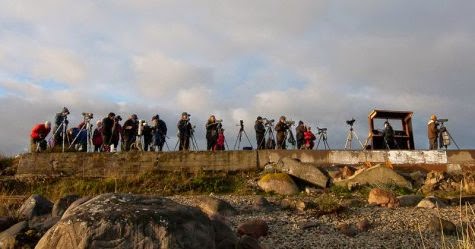The international birdwatching event EuroBirdwatch 2014 on the weekend of 4-5 October was attended by 40 countries from Europe and Central Asia. In Estonia, over 300 people participated in the event and collected 98 sighting lists, the longest of which was 111 species of birds. At several places in Estonia it was also possible to join a guided birding trip. During the weekend over 400,000 birds of 166 species were observed..
Despite the beautiful weather the passerine migration was not great and inland the number of the birds was extremely low. But the situation was totally different near the sea. At Põõsaspea Cape, the international event celebrated by 60-70 birdwatchers from Estonia and abroad saw some superb migration with the season's best counts: nearly 90,000 birds in all. An early passage of Long-tailed Duck produced 58,000 birds with smaller, but still impressive, numbers of Velvet Scoter (5,500), Wigeon (6,300), Pintails (1,050), Scaup (2,300), Red-throated Diver (720), Barnacle Goose (6,800) and Brent Goose (2,180). Also worth mentioning are Dunlin (133) and Grey Plover (32).
Photo: Aki Aintila
Other species seen in good numbers include Great Tit, Hooded Crow, Black-billed Magpie, Eurasian Jay and Great Spotted Woodpecker and more interesting species were Yellow-browed Warbler, Common Guillemot and Hoopoe. Quite a lot of migratory species that should have already left Estonia were also seen, such as Shelduck, White Stork, Honey Buzzard, Eurasian Curlew, Black Tern, Spotted Flycatcher, Common Redstart, Serin, Sedge Warbler, Blackcap and Penduline Tit.


No comments:
Post a Comment